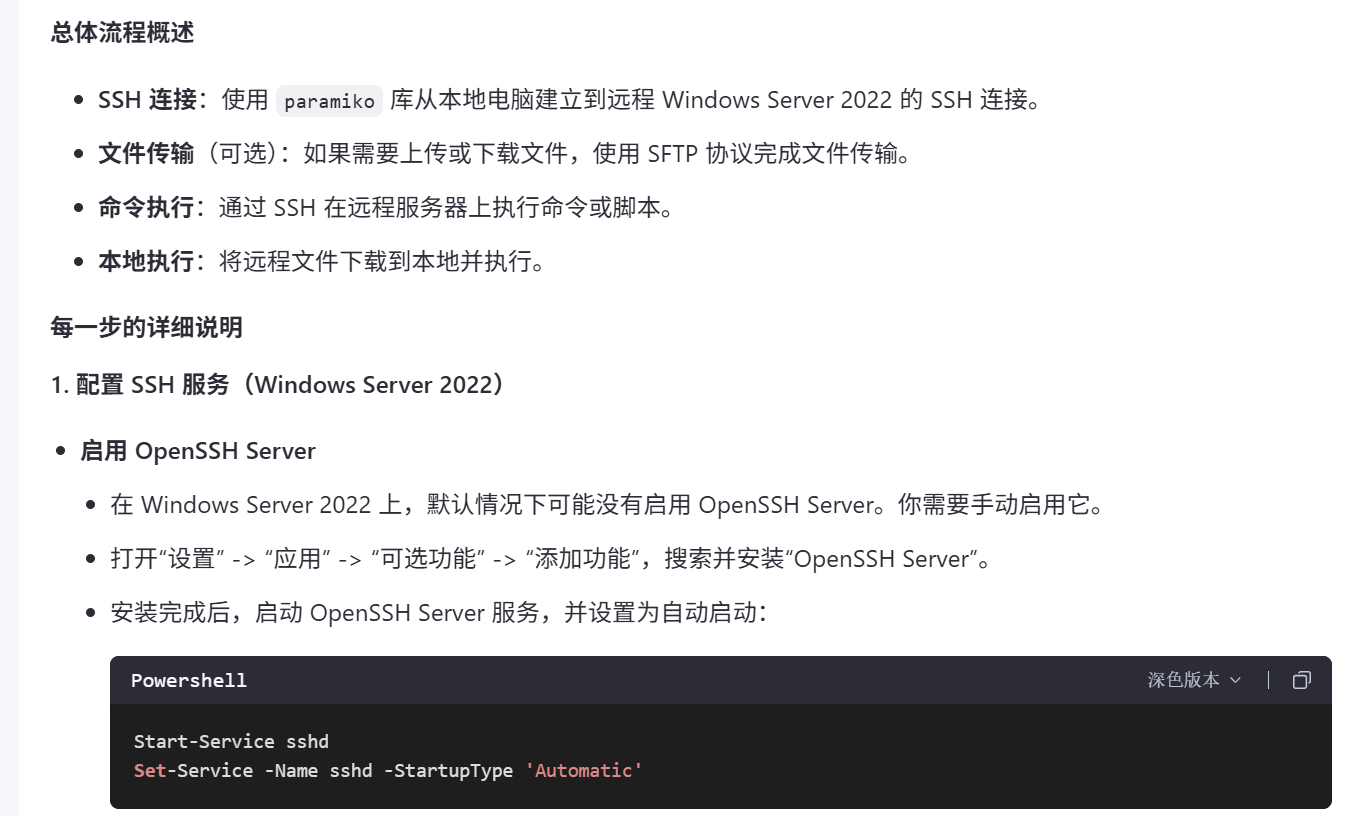
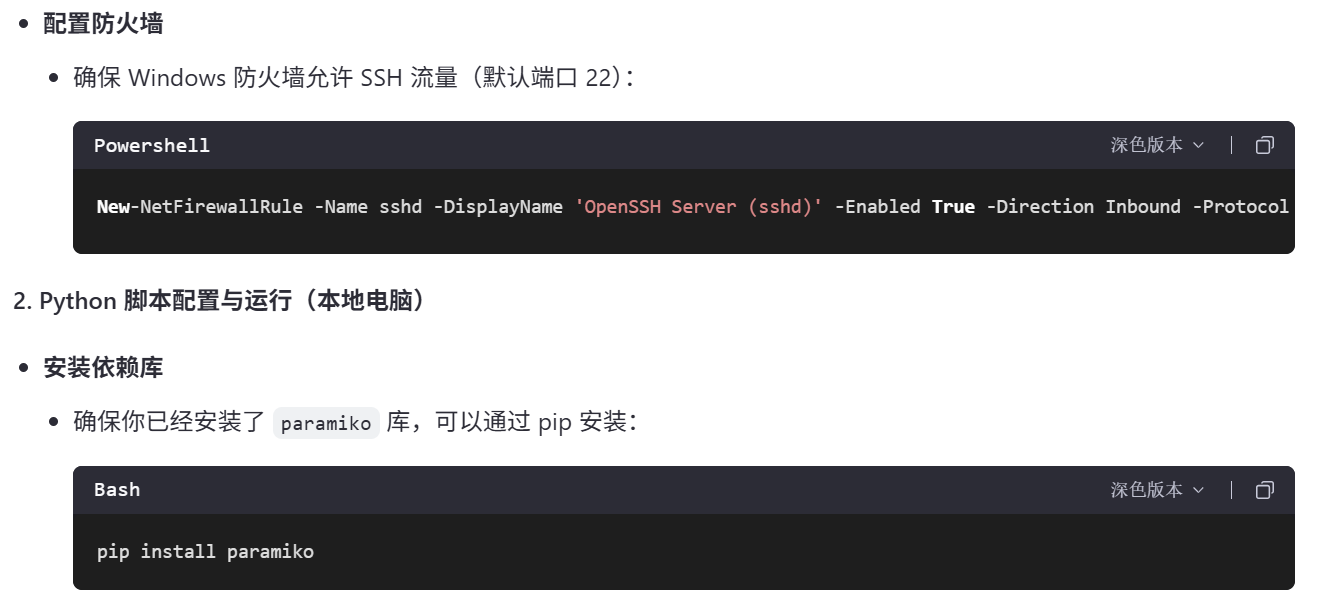
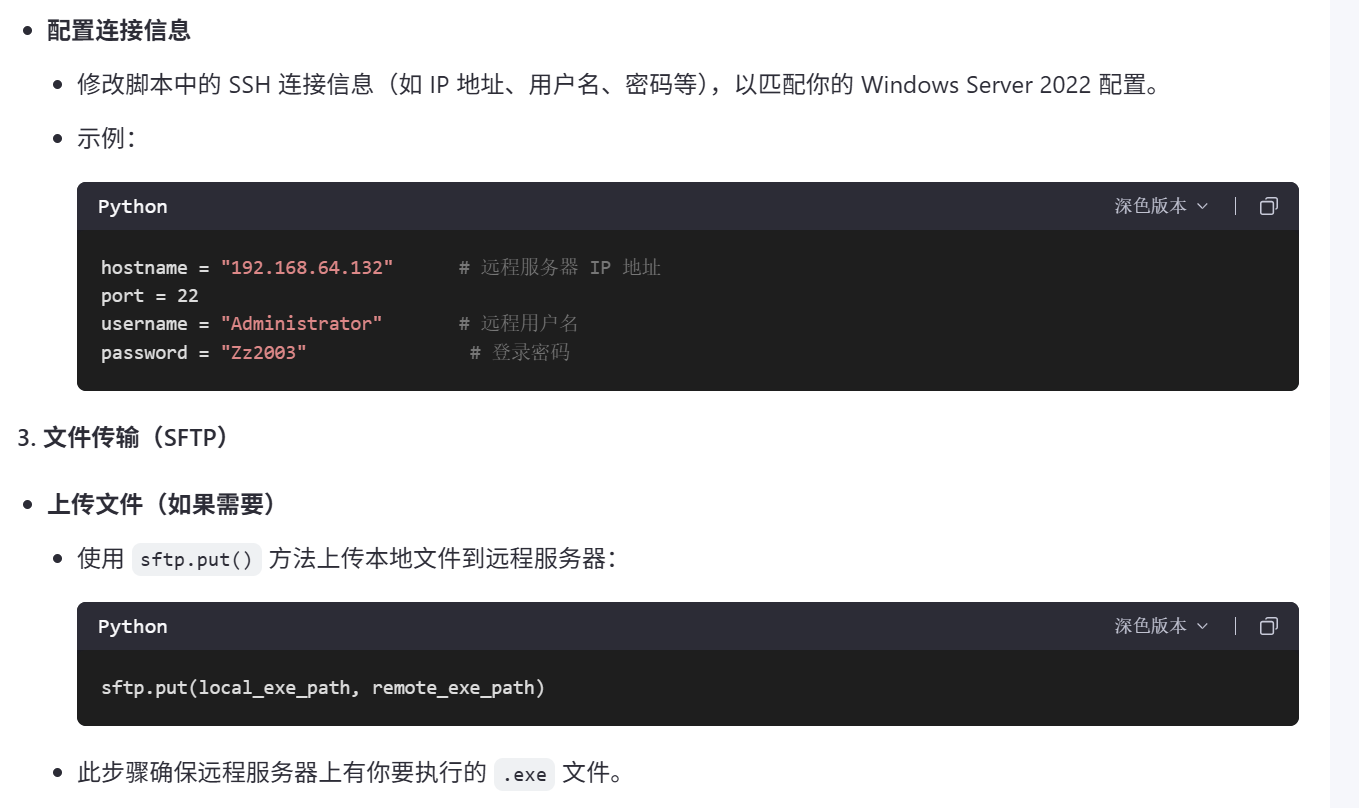
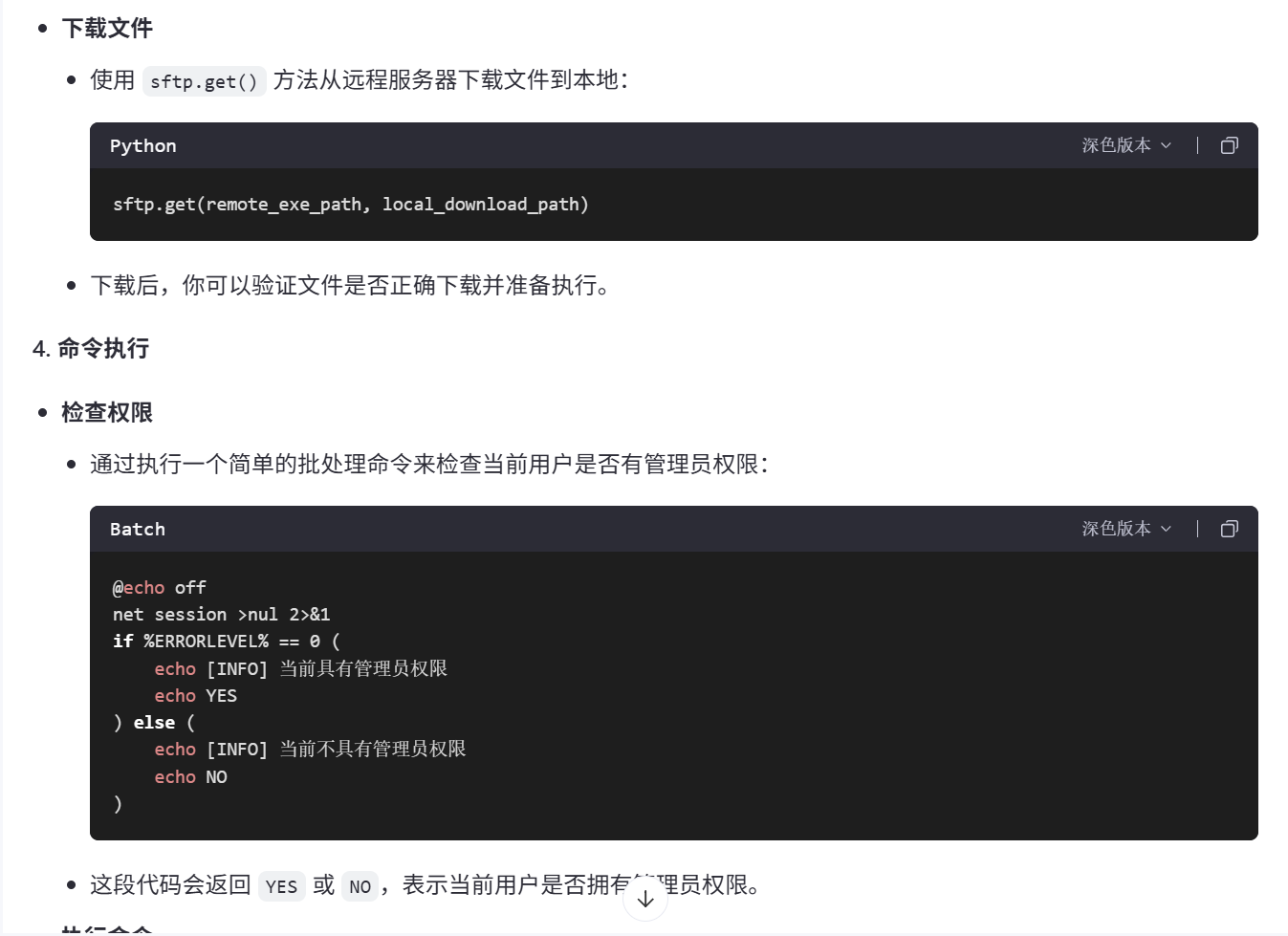
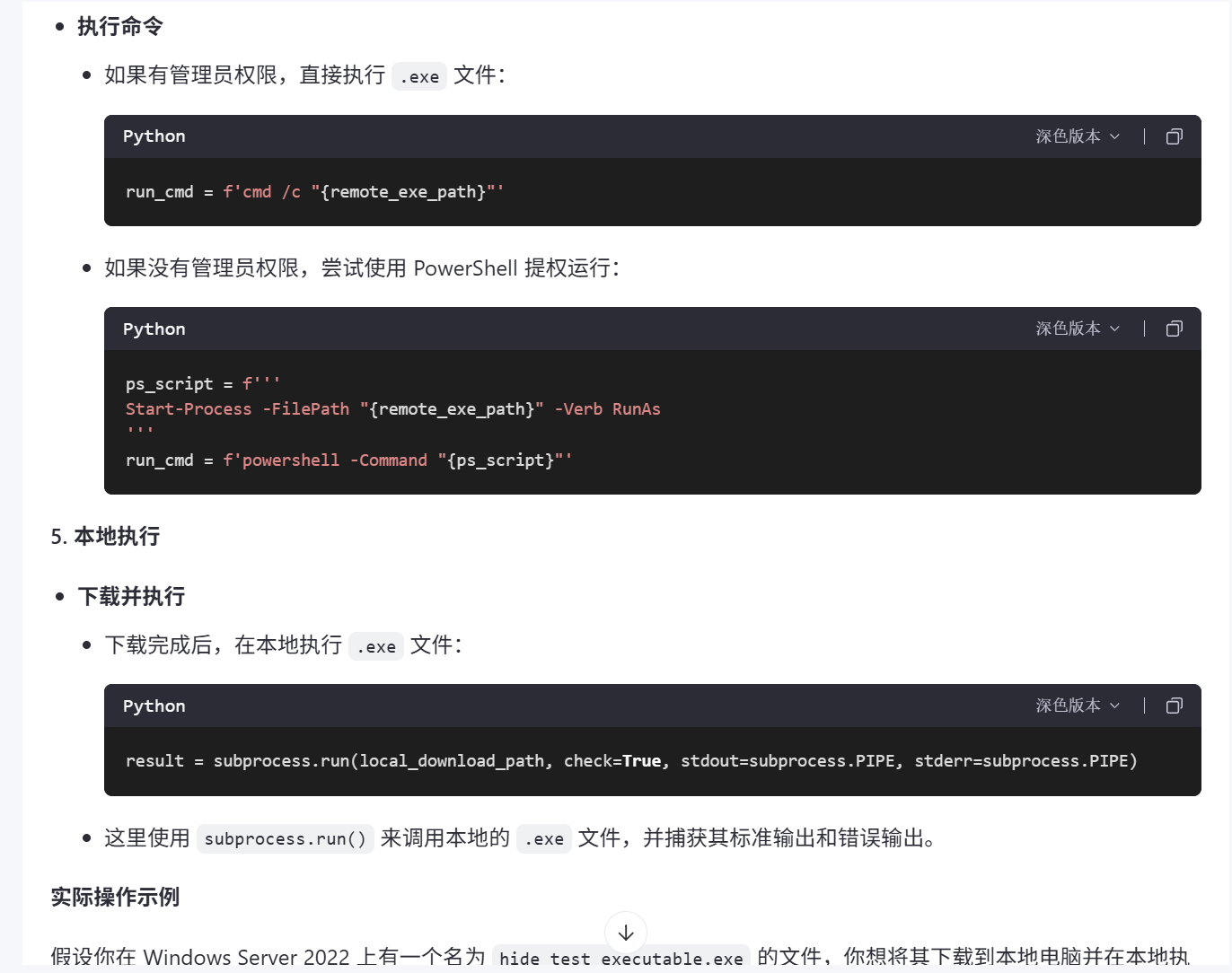
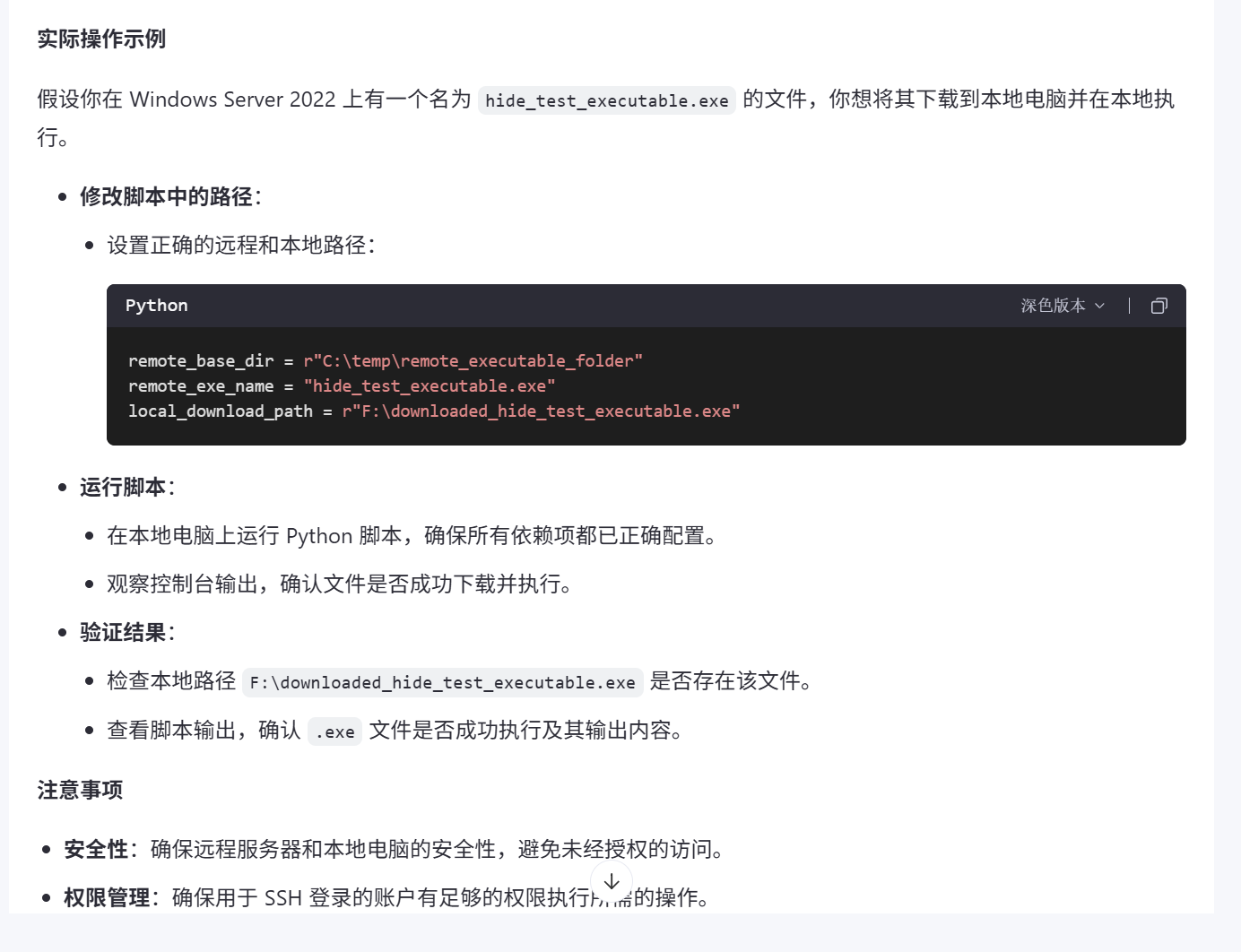
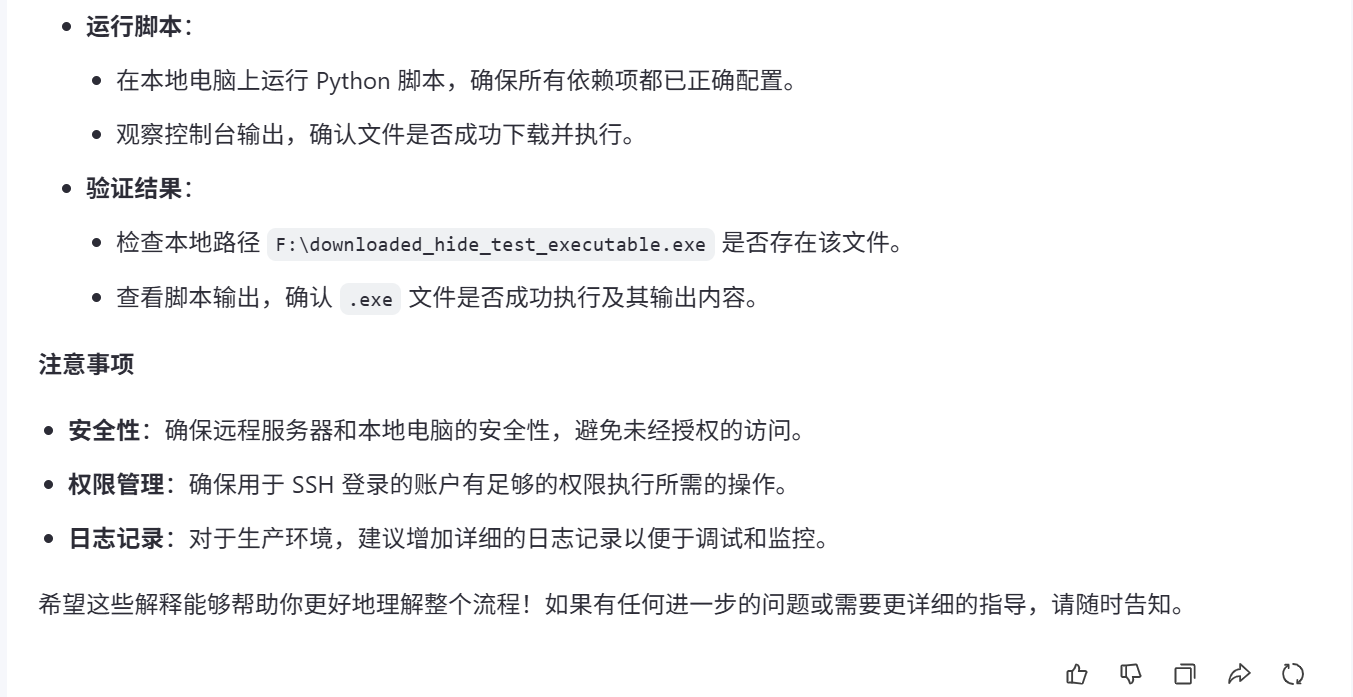
在服务器上运行的powershell文件用于打开防火墙规则和打开ssh连接
# 检查是否存在允许TCP 22端口的防火墙规则 $firewallRuleName = "OpenSSH-Server-In-TCP" $rule = Get-NetFirewallRule -Name $firewallRuleName -ErrorAction SilentlyContinue
if ($null -eq $rule) { Write-Output "未找到允许SSH连接的防火墙规则,正在创建…" # 创建一个新的入站规则来允许TCP 22端口的流量 New-NetFirewallRule -Name $firewallRuleName ` -DisplayName 'OpenSSH Server (sshd)' ` -Enabled True ` -Direction Inbound ` -Protocol TCP ` -Action Allow ` -LocalPort 22 Write-Output "防火墙规则创建成功。" } else { Write-Output "已存在允许SSH连接的防火墙规则。" }
# 检查是否已安装 OpenSSH 服务器 $openSshCapability = Get-WindowsCapability -Online | Where-Object Name -like 'OpenSSH.Server*'
if ($null -eq $openSshCapability -or $openSshCapability.State -ne 'Installed') { Write-Output "OpenSSH 服务器未安装或状态不正确,正在尝试安装…" Add-WindowsCapability -Online -Name OpenSSH.Server~~~~0.0.1.0 } else { Write-Output "OpenSSH 服务器已安装" }
# 确保OpenSSH服务正在运行 $service = Get-Service -Name sshd if ($service.Status -ne 'Running') { if ($service.Status -eq 'Stopped') { Write-Output "sshd服务未运行,正在启动…" Start-Service sshd Set-Service -Name sshd -StartupType 'Automatic' } else { Write-Warning "sshd服务状态异常:$($service.Status)" } } else { Write-Output "sshd服务正在运行。" }
# 输出当前sshd服务状态 Write-Output "当前sshd服务状态:" Get-Service sshd
Write-Output "配置完成。你现在应该可以通过SSH远程连接。"
对应的python文件
# -*- coding: utf-8 -*-
import paramiko
import os
import subprocess
# ========================
# 配置 SSH 连接信息
# ========================
hostname = "" # 远程服务器 IP 地址
port = 22
username = "" # 远程用户名
password = "" # 登录密码
# ========================
# 本地和远程文件路径
# ========================
remote_base_dir = r"C:\\temp\\remote_executable_folder" # 远程目录
remote_exe_name = "hide_test_executable.exe" # 远程 .exe 文件名
local_download_path = r"F:\\downloaded_hide_test_executable.exe" # 下载到本地的路径
# 创建 SSH 客户端
ssh = paramiko.SSHClient()
ssh.set_missing_host_key_policy(paramiko.AutoAddPolicy())
try:
# 建立连接
ssh.connect(hostname=hostname, port=port, username=username, password=password)
print("[+] SSH 连接已成功建立")
# 构建远程 exe 路径
remote_exe_path = os.path.join(remote_base_dir, remote_exe_name)
# 使用 SFTP 下载文件
sftp = ssh.open_sftp()
try:
sftp.get(remote_exe_path, local_download_path)
print(f"[+] 文件已从远程服务器下载至: {local_download_path}")
except Exception as e:
raise Exception(f"下载文件时出错: {e}")
# 关闭 SFTP
sftp.close()
# ========================
# 在本地运行下载的 exe 文件
# ========================
print("[+] 正在准备在本地运行下载的程序…")
try:
result = subprocess.run(local_download_path, check=True, stdout=subprocess.PIPE, stderr=subprocess.PIPE)
print("[+] 标准输出:")
print(result.stdout.decode('gbk', errors='ignore'))
if result.stderr:
print("[-] 错误输出:")
print(result.stderr.decode('gbk', errors='ignore'))
print("[+] 程序执行结束,退出状态码: 0")
except subprocess.CalledProcessError as e:
print(f"[-] 程序执行失败,退出状态码: {e.returncode}")
print("[-] 错误输出:")
print(e.stderr.decode('gbk', errors='ignore'))
except FileNotFoundError as fnf_error:
print(f"[!] 文件错误: {fnf_error}")
except paramiko.AuthenticationException:
print("[-] 认证失败,请检查用户名或密码")
except paramiko.SSHException as e:
print(f"[-] SSH 连接异常: {e}")
except Exception as e:
print(f"[-] 发生了一个未预料的错误: {e}")
finally:
try:
ssh.close()
print("[*] SSH 连接已关闭")
except:
pass
 网硕互联帮助中心
网硕互联帮助中心
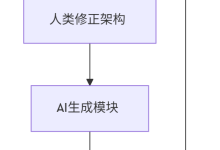

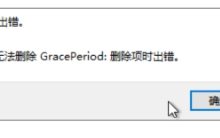
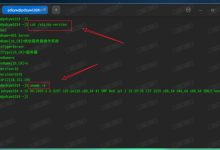
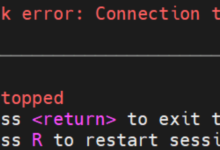


评论前必须登录!
注册